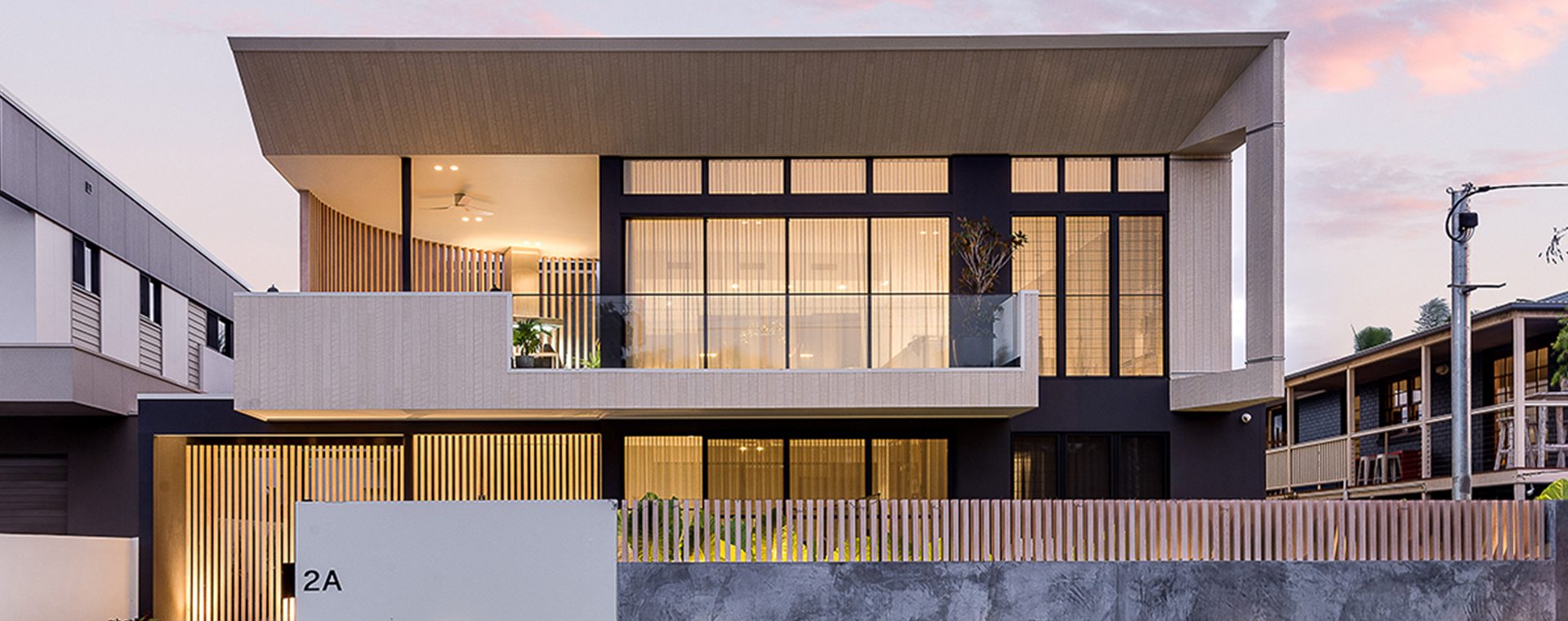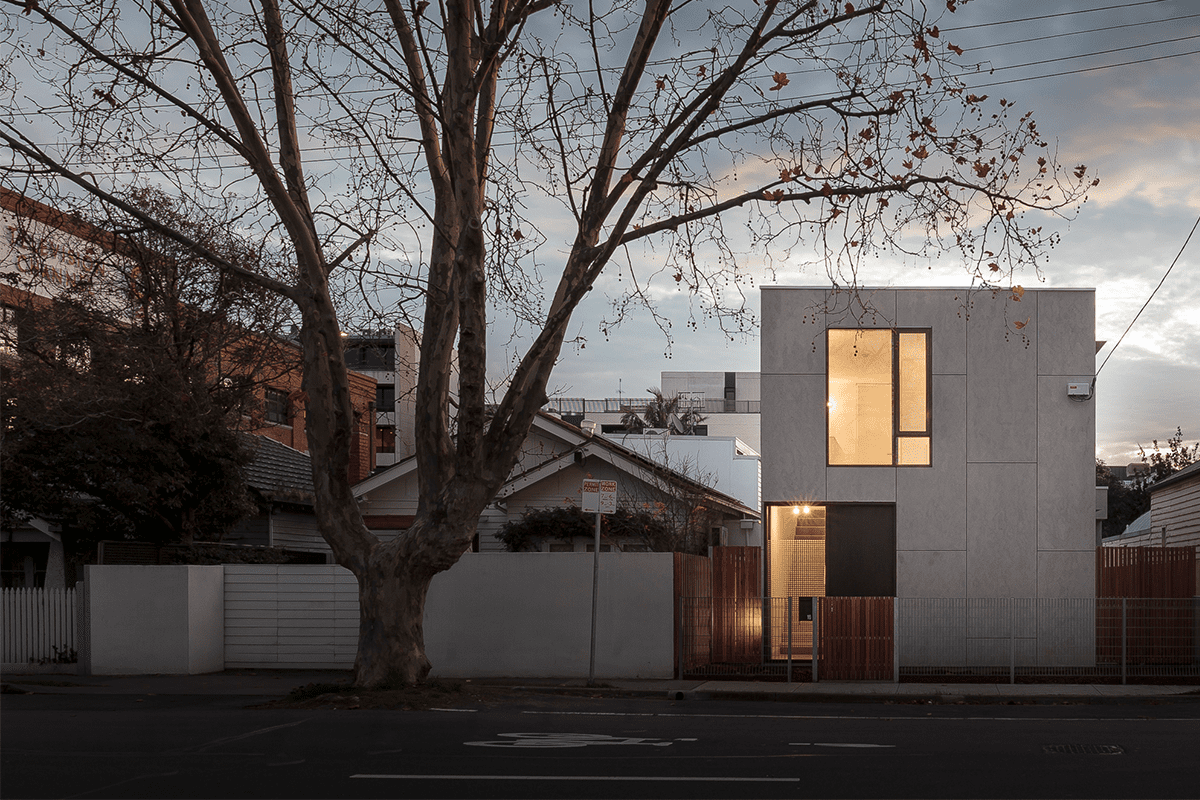There’s so much to consider when designing and constructing a new home. From the suburb you choose, to the style you select and the size of the building, there are many areas to consider and decisions to make.
It can be overwhelming when you start the process of building your new home. We’ve compiled five key points to consider, to help you start your journey.
 Contemporary home uses mixed materials including Territory Quarry Urban Grey by BCG Building Design.
Contemporary home uses mixed materials including Territory Quarry Urban Grey by BCG Building Design.
House Orientation
Thinking about how your house sits on your land is crucial. The position of your house can influence how light comes into the home, and how you can maintain a comfortable temperature throughout the seasons.
It also depends on your climate zone, as tropical zones have different requirements to homes in colder or drier climates. Start by identifying your climate zone to see whether you need to focus on orientating your home for passive heating or passive cooling.
The path of the sun in Australia is to the north, so most homeowners choose to have their living spaces facing north so they receive sun for the longest period of the day in their most-used rooms, and many will limit the size and number of windows on west-facing walls.
Importantly, the decision on the orientation should be made right at the drawing board stage, so chat to your builder and/or architect before plans are finalised.
Your Style
Street appeal is crucial when designing and building a house – it helps to increase the value of your home and should reflect your style and the way you live. Designing from the outside in is a great way to approach your new home’s look.
There are many styles of new homes being designed and developed. Each offers a different design viewpoint and works best in certain surroundings.
If you are looking to create a modern Australian coastal style house – consider Cemintel’s paint-on-site cladding for your exterior. The relaxing beach areas of our country have inspired its classic detailing and timeless style.
A modern warehouse or industrial vibe suits Barestone Original, which features a raw and authentic finish, while a timber-look classic exterior is ideally suited to cladding in Cemintel’s Territory™ Woodlands, which has the texture and warmth of timber, without the maintenance headaches. Contemporary homes can work well with the Edge vertical cladding range, as the streamlined finish adds a modern touch.
Not sure of your preferred style? Start with a mood board of images of your favourite exterior designs. This can help identify some common themes and a preferred aesthetic and set you on the right path.
 This home from Soul Home uses Balmoral Weatherboards and Cemintel cladding sheet to create a sophisticated barn house / Hamptons style.
This home from Soul Home uses Balmoral Weatherboards and Cemintel cladding sheet to create a sophisticated barn house / Hamptons style.
 Beautiful contemporary style home by Newcastle Building. Using Barestone Original for the front and rear facades.
Beautiful contemporary style home by Newcastle Building. Using Barestone Original for the front and rear facades.
Mixing building materials
A well-designed exterior often features different materials. This helps to create your home’s individual style and add interest to the front façade. The classic good looks of Cemintel products pair well with other building materials, including Hebel, PGH Bricks and PGH Stone.
Generally, it’s best to stick with two to three exterior materials, with a considered colour palette, to prevent the façade from looking too busy or cluttered. Start with one main material and layer on feature elements for effect.
Need inspiration? Consider using stone as a feature element on a front porch, matched with the elegance of Edge vertical cladding in a white or pale grey. Similarly, rendered Hebel pairs well with Territory, especially when working with a darker palette. You can explore the different textures by using the CSR Visualiser.
Comfort and fire safety
Where are you building your home? Australia is a land of extreme weather conditions, from Melbourne’s four seasons in one day, to the steamy hot summers of northern Queensland and Western Australia’s long hot days. It’s important to choose building materials that are built for our climate and to our building regulations. Like all CSR products, Cemintel meets Australian building standards and are developed with our weather in mind.
Having a temperature-controlled home is not only more comfortable, but it can also save on air conditioning and heating bills. This is because Cemintel fibre cement’s ventilated cavity structure helps to reduce heat transfer and facilitate air flow, creating a more comfortable environment year-round.
There are many Australian homes in bushfire-prone zones. Because of this, fire performance is a top priority. Cemintel is not just an attractive cladding choice – it’s also a compliant one. Our Barestone External and Territory panels, for example, are resistant to bushfire attack level 40 (BAL 40)* making them a reliable choice for homes facing this risk.
 Stunning home using Barestone Original nestled in bushland by Edition Office. Photography by Rory Gardiner.
Stunning home using Barestone Original nestled in bushland by Edition Office. Photography by Rory Gardiner.
 Imagine relaxing in this coastal Hamptons style alfresco by Integrale Homes.
Imagine relaxing in this coastal Hamptons style alfresco by Integrale Homes.
Your lifestyle
Australian families are busier than ever. Many are juggling competing priorities – career demands, growing kids and the challenge of finding time to catch up with friends and family – so you want to make sure your new home suits your lifestyle. And you don’t want to spend all your weekends maintaining your new home.
Think of how you live. Do you entertain frequently? Do you live in a warmer climate? Will you have kids running around a yard? Will you have time to maintain your exterior? All these questions will help you to make a final decision on the exterior material of your new home.
Quality cladding products such as Cemintel are perfect for the modern homeowner. With a range of products that are pre-finished and fast to install, they are largely maintenance free and only need the occasional hose down to maintain their appearance. Cemintel is even a great choice in exposed locations such as coastal settings as it is resistant to salty air.
*Cemintel Barestone and Territory products are resistant to bushfire attack level (BAL 40) when constructed in accordance with AS 3959, please refer to the relevant D&I guides for more information.
Keep me informed
Keep me up-to-date with future news and info on Cemintel


